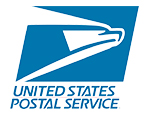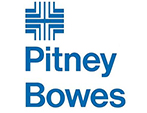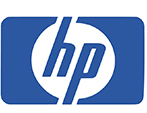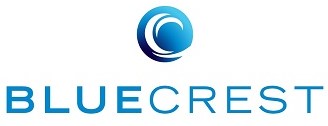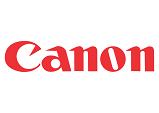Thinking about direct mail for your business but unsure of the cost? You’re not alone. It can be tough to determine how direct mail fits into your marketing budget—especially with confusing information floating around.
This guide breaks it all down so you can plan with confidence. We’ll show you real pricing examples, explain why costs vary, and help you find a cost-effective solution that delivers results.
How much does Direct Mail Marketing cost?
Direct mail typically costs between $0.30 and $3.00 per piece, depending on design, printing, postage, and mailing volume. Costs can vary based on several key factors:
- Design: Custom layouts, branding, and visuals may require graphic design support, especially for businesses aiming to stand out in competitive industries.
- Printing: Postcards, folded mailers, special printing stock, or finishes increase material and production costs.
- Postage: Standard vs. First-Class postage impacts both budget and delivery timelines. Choosing the right option depends on how time-sensitive your message is.
- Mailing: Using a high-quality, targeted mailing list helps ensure relevancy and response, though it often comes at an additional fee.
When planned strategically, direct mail remains one of the most efficient marketing channels to connect with customers.
| Component | Low Volume | High Volume |
| (1,000 pcs) | (10,000 pcs) | |
| Design | $99–$199 | Often included |
| Printing | $0.08–$0.25 per card | $0.05–$0.12 per card |
| Mailing Service | $0.04–$0.10 per piece | $0.02–$0.05 per piece |
| Postage | ~$0.38–$0.43* | ~$0.23–$0.39* |
| Average Cost per Piece (all-inclusive) | ~$0.60 | ~$0.40 |
Guide to Direct Mail Marketing Costs
The challenge for most businesses is that direct mail pricing can vary depending on five key factors:
1. Volume
Volume is the single biggest driver of direct mail marketing cost.
- Printing a higher volume of postcards significantly reduces the cost per piece.
- For example, printing 5,000 postcards may cost around $0.40 each, while printing only 500 could raise the cost to over $1 per piece.
- Bulk print runs are more cost-effective because they reduce setup costs and qualify for lower postage rates.
2. Design & Creative
Design and creative services can influence direct mail pricing based on the level of customization and professional support involved.
- Using an in-house design or a pre-built template keeps design costs low or even free.
- Working with a professional designer allows for more tailored, on-brand creative that can help your mail stand out and better resonate with your audience.
- In competitive industries like insurance, legal services, and education, investing in quality creative often leads to higher engagement and better response rates.
3. Printing Format
The format and finish of your direct mail piece play a significant role in overall campaign cost.
- Standard postcards in sizes like 4”x6” or 6”x9” are the most economical option for most businesses.
- More complex formats such as folded mailers, booklets, or HIPAA-compliant letters increase costs due to specialized production and secure handling requirements.
- Print finishes such as gloss, matte, or UV coating also affect pricing; UV coating, in particular, adds durability and visual impact, making it ideal for high-visibility campaigns.
4. Postage
Postage is a major factor in direct mail marketing costs and varies based on speed and service level.
- Standard (Marketing Mail) is the most affordable option, typically costing around $0.30 per piece when presorted.
- First-Class Mail offers faster delivery and includes return services, but it can nearly double your postage costs.
- For time-sensitive or political campaigns, the added speed and tracking of First-Class Mail may justify the higher expense.
5. Targeting
The quality and source of your mailing list directly affect both campaign cost and effectiveness.
- Using your own list is free, but it may lack the precision needed to reach your ideal audience.
- Renting or purchasing a high-quality, verified mailing list increases costs but can significantly improve targeting and response rates.
- Lists filtered by criteria such as income, ZIP code, homeownership, or industry are widely used, while advanced options like new movers, Medicare-eligible households, or geo-targeted demographics offer even greater relevance at a higher price point.
6. Add-ons
Beyond printing and postage, certain campaign enhancements can elevate engagement and improve tracking, often at an added cost. Popular add-ons include:
- QR Codes: Drive digital engagement by linking recipients to landing pages, videos, or online offers—ideal for bridging offline and online channels.
- Call Tracking: Assign unique phone numbers to measure call volume and attribution from your mail piece.
- eDelivery Options: Offer recipients the ability to opt in for secure digital communications, especially valuable in healthcare, finance, and insurance.
While these features may raise the overall campaign cost, they offer measurable ROI improvements and create a more responsive, personalized, and omnichannel experience for your audience.
Calculate Your ROI
Wondering if direct mail is worth the investment? Start by using a simple ROI formula that helps you quantify performance:
ROI = (Revenue from Campaign – Total Campaign Cost) ÷ Total Campaign Cost × 100
Example:
You spend $2,000 on your direct mail campaign and generate $10,000 in revenue.
ROI = 400%
This calculation gives you a clear picture of your return, helping you justify spend and optimize future campaigns.
Plan with Confidence
Direct mail marketing doesn’t have to be overwhelming—or overpriced. With the right partner, it becomes a cost-effective, high-ROI marketing channel that brings in leads, builds trust, and reinforces your brand in ways digital ads simply can’t.
EOS is here to help you plan every step, from creative to postage with clarity and confidence.
Frequently Asked Questions
What factors affect direct mail pricing the most?
The biggest factors include print volume, design complexity, postage type, list targeting, and optional add-ons like QR codes or retargeting ads.
Is direct mail cost-effective for small businesses?
Yes, direct mail remains a cost-effective and scalable marketing option especially when campaigns are optimized for targeting and paired with digital strategies.
How can I reduce my direct mail campaign costs?
You can reduce costs by printing in bulk, using standard postcard formats, selecting Marketing Mail postage, and working with an experienced provider like EOS to access discounted rates.
What’s the best print format for direct mail?
Standard-sized postcards (4”x6” or 6”x9”) are the most economical and commonly used format for direct mail campaigns.
Do I need to buy a mailing list for direct mail?
Not necessarily. You can use your own list, but purchasing a high-quality, targeted list such as new movers or Medicare leads can greatly improve your campaign results.


